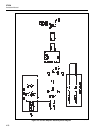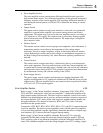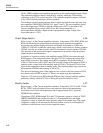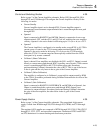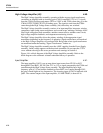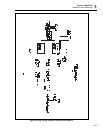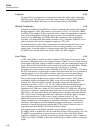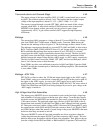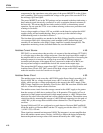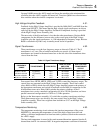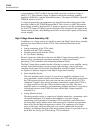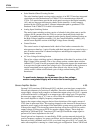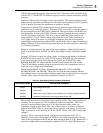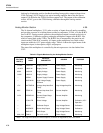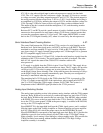
5725A
Instruction Manual
4-28
compensate for the capacitance seen at the gates of the power MOSFETs on the #1 heat
sink assemblies. Their sources establish the voltage on the gates of the cascode FETs in
the midstage, Q654 and Q662.
The power MOSFETs are in the TO3 package and are mounted to the heat sinks using a
heat conductive pad (electrically conductive as well) to minimize thermal resistance to
the heat sink. This means that the heat sinks can have ±400V on them during normal
operation. Do not open the 5725A cover without referring to the access procedures and
warnings in Section 6.
Lower voltage supplies of about ±50V are available on the board to replace the ±400V
supplies during test and troubleshooting. How to power up in the reduced-voltage
troubleshooting mode is described in Section 7.
The four heat sink assemblies are attached to the High Voltage Amplifier assembly (A3)
via connectors P661-664. A thermistor is stud mounted to the P-channel heat sink
assembly #2 and attaches to the High Voltage Amplifier Assembly through J603. The
temperature monitoring circuit, described further on, uses this thermistor.
Autobias Current Source 4-49.
FET Q653 is a current mirror that provides a dc current to bias the midstage. FET Q654
is a cascode stage to share the voltage and power. Since the loop forces the dc output of
the amplifier back to zero if the midstage current is increased, the effect of increasing the
midstage current is to increase the voltage drop across R674. Midstage current is
increased until the gates of the output devices (connected to either end of R674) are
driven just hard enough to establish the desired idle current in the output stage.
The current that Q653 mirrors comes from Q657, which is driven by BIAS from the
Autobias Sense Circuit. FET Q657 stands off the high voltage to the +400V supply and
makes the autobias circuit less sensitive to its ripple.
Autobias Sense Circuit 4-50.
The autobias sense circuit senses the +400V IM from the Power Supply assembly (A4).
Signal +400V IM is a voltage developed across a R313 in the low side of the +400V
supply, which provides a voltage proportional to the current in the 400V supply. If the
High Voltage Amplifier were operating Class B, the +400V IM waveform would be half
sines for a sinusoidal output current waveform.
The autobias sense circuit forces the average current in the +400V supply to be greater
than the average of a half sine to produce Class A-B operation. This results in Class A
operation for small output currents and for high output currents, a +400V IM waveform
that looks like a half sine at the peak but is more rounded at the base. The autobias sense
circuit does this by measuring the average of +400V IM and comparing it to the peak of
+400V IM / pi (the average that would have been obtained for Class B operation), plus
an offset.
Op amp U606A and C621 are configured as a peak detector. Resistors R647 and R648
divide the peak by pi. Resistor R643 and the 15V supply provide the offset: (15V * 10K)
/ (4.3M * 0.39) = 90 mA.
These signals are summed into integrator U601B. The integrator is an error amplifier that
drives the autobias current source circuitry, via BIAS, to achieve the desired relationship
between the peak and average values of the current delivered by the +400V supply.



